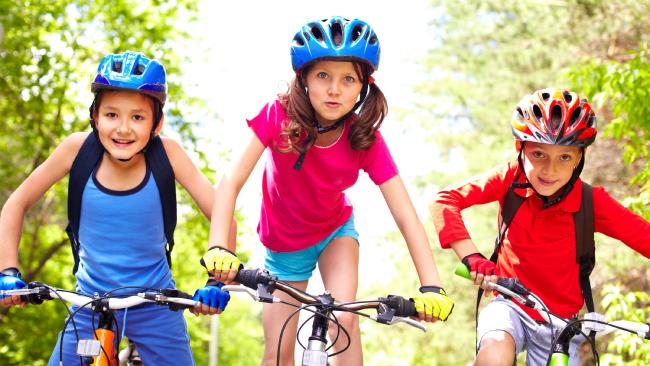
30 Jun Active kids are healthy kids
We all know exercise is good for us – but it is particularly important for our kids.
Physical activity is not only great fun – it is essential for healthy growth and development. So how do we make sure our kids are getting enough?
Why an active lifestyle is good for kids:
Health benefits:
Physical activity not only benefits your child’s health now – it helps set up healthy habits for life. Regular exercise has been shown to:
- Strengthen growing bones and muscles.
- Maintain a healthy heart, lungs and arteries.
- Improve physical fitness, including coordination and movement skills.
- Improve balance, posture and flexibility.
- Reduce the risk of unhealthy weight gain.
- Reduce the risk of heart disease and type-2 diabetes later in life.
Social, emotional and intellectual benefits:
Physical activity also has positive effects on children’s emotional wellbeing, social skills and cognitive development. Active children are more likely to:
- Be confident and feel like they belong.
- Be happy and relaxed.
- Sleep well.
- Concentrate better at school.
- Get along with others and make friends easily.
- Share, take turns and cooperate.
How much physical activity does your child need?
The amount of activity your child needs will vary according to their age. The Department of Health lists the following physical activity recommendations for children:
- Children aged 0-1 years should have some physical activity, particularly supervised floor play, every day.
- Children aged 1-5 years should be physically active every day for at least three hours, with activity spread across the day.
- Children aged 5-18 years should accumulate at least one hour of moderate to vigorous physical activity each day. This activity doesn’t have to be done all at once. Your child can do it in small blocks of time throughout the day.
Moderate physical activity can include any activities that get your child gently huffing and puffing (about as intense as a quick walk or bike ride).
Vigorous physical activity means activities that get your child huffing and puffing a lot, and sweating. This could be running, chasing and playing tag, or playing an organised sport like soccer or netball.
Types of physical activity:
Even if your child doesn’t play sport, there are plenty of other physical activities they can benefit from.
Simple, everyday physical activities might include:
- Going for walks.
- Playing in playgrounds.
- Playing in parks, nature reserves, ovals or beaches.
- Playing ‘chasey’, ‘keepings off’, one-on-one soccer, basketball, touch rugby or netball in the backyard or park.
- Walking or riding a bike, skateboard or scooter to school.
- Helping out with chores like walking the dog, washing the car or helping in the garden.
Tips for encouraging active children:
- Find activities that your child enjoys – dancing, skipping, bike riding, climbing trees, throwing a ball or playing Frisbee – anything that sparks their interest.
- Encourage your child to explore lots of different activities to find something they like. By trying out different activities they will pick up new skills, stay interested and challenged, and pack plenty of physical activity into their day.
- Limit “sedentary time” – this refers to time your child spends sitting or lying down (the use of electronic media can be a big contributor to children’s sedentary time).
- Be a good role model – be active yourself and your child is more likely to follow your lead.
- Give your child praise and encouragement if an activity is proving challenging or difficult.
- Make time to have fun playing actively with your child. It’s great to find something you both enjoy doing.
- Encourage your child to play outside.
- Go along with your child when they try an organised sport or group lesson – for example, swimming or dancing. Your support and interest is a great motivator.
- Get your nanny, au pair or nanny sharing on board. Kids are able to continue their active lifestyles with their nanny – for example attending organised sports and lessons, or heading to the park for a bike ride – more easily than if they are in a larger child care setting.
- Set aside time to be active together as a family – organise family activities like camping, bushwalking and outdoor games.
- On rainy days, try a dance competition in the lounge room with the kids, play games with balloons or soft balls inside, or visit an indoor swimming pool.
- Keep an activities box at home and in the car with balls, bats, kite, beach bucket and spade so that you’re always prepared.
- Balls, bikes and scooters make great gifts, and encourage physical activity and opportunities to play outdoors.
Final note:
Any amount of regular physical activity is better than none. Look for simple ways to add physical activity to your child’s day, limit sedentary time and do your best to be an active role model.
By encouraging our kids to be active each day, we can establish healthy habits that will stay with them for the rest of their lives.




